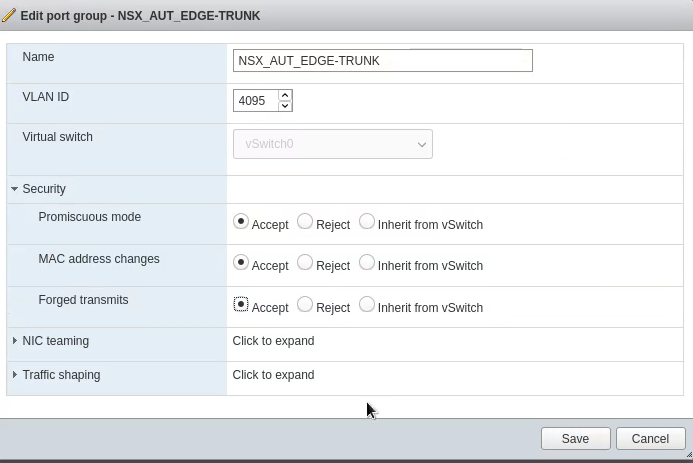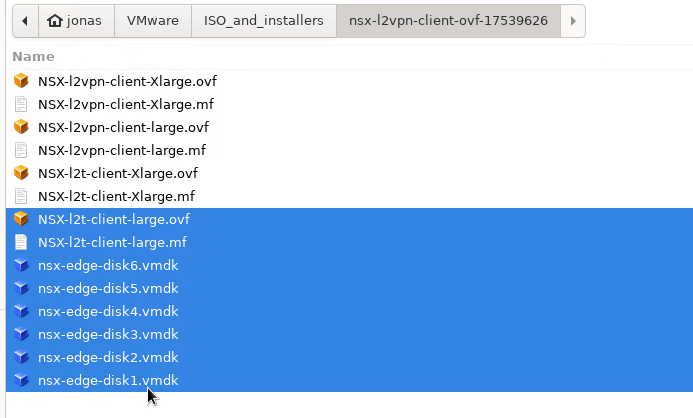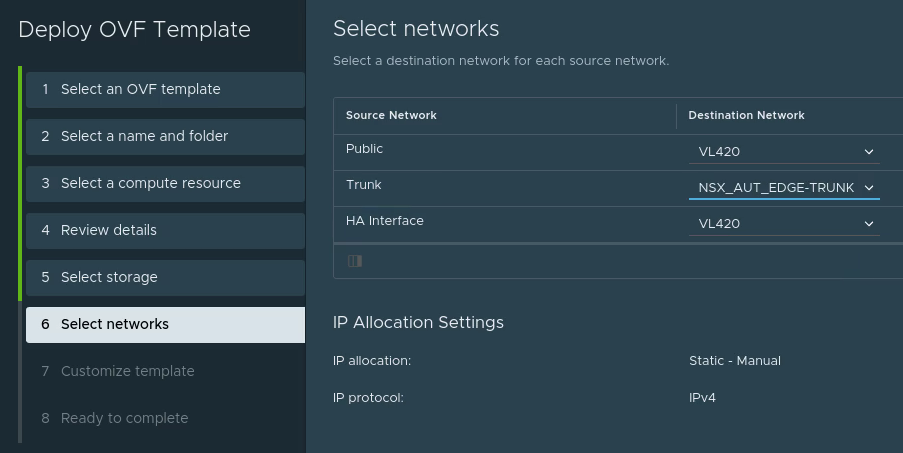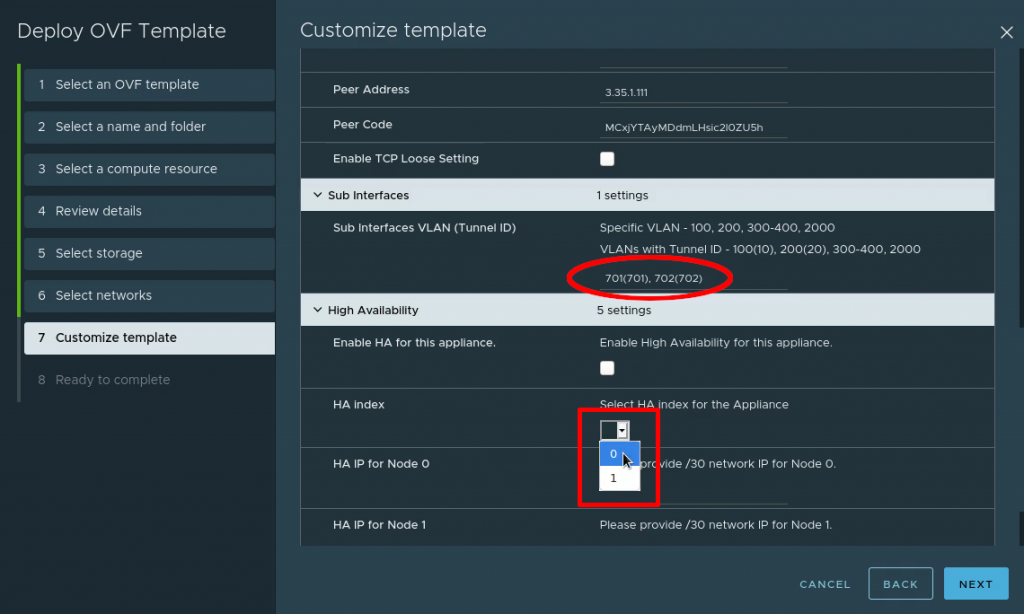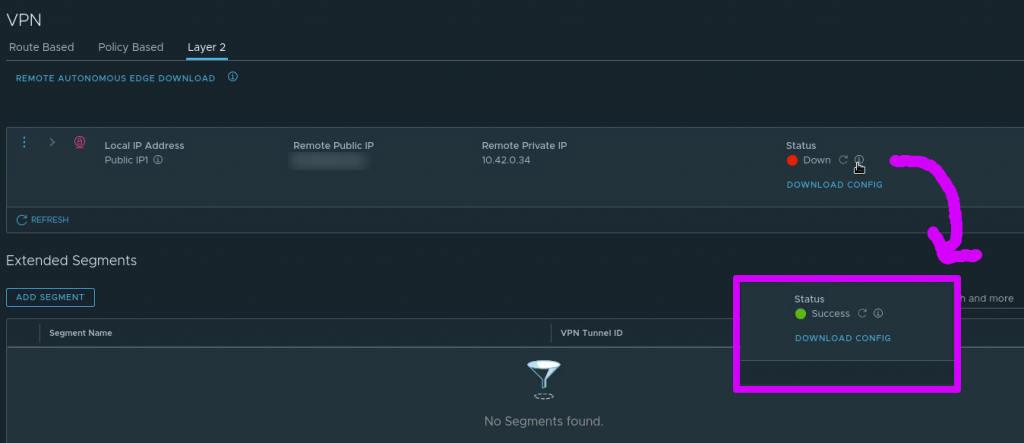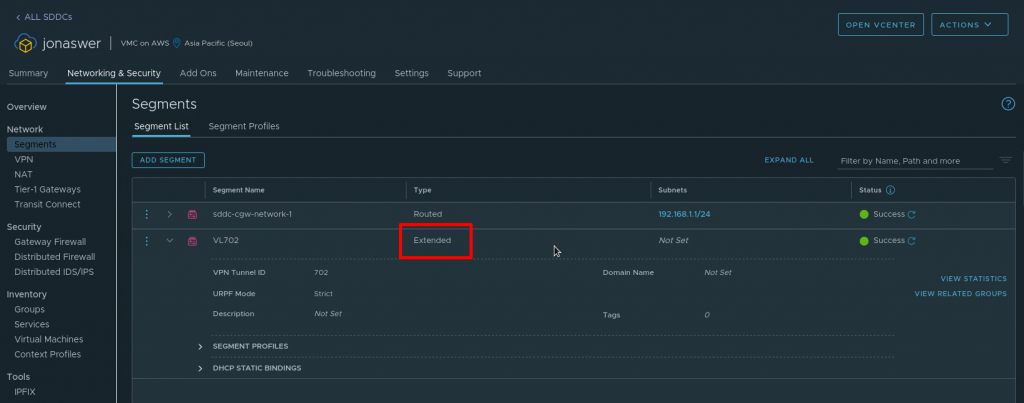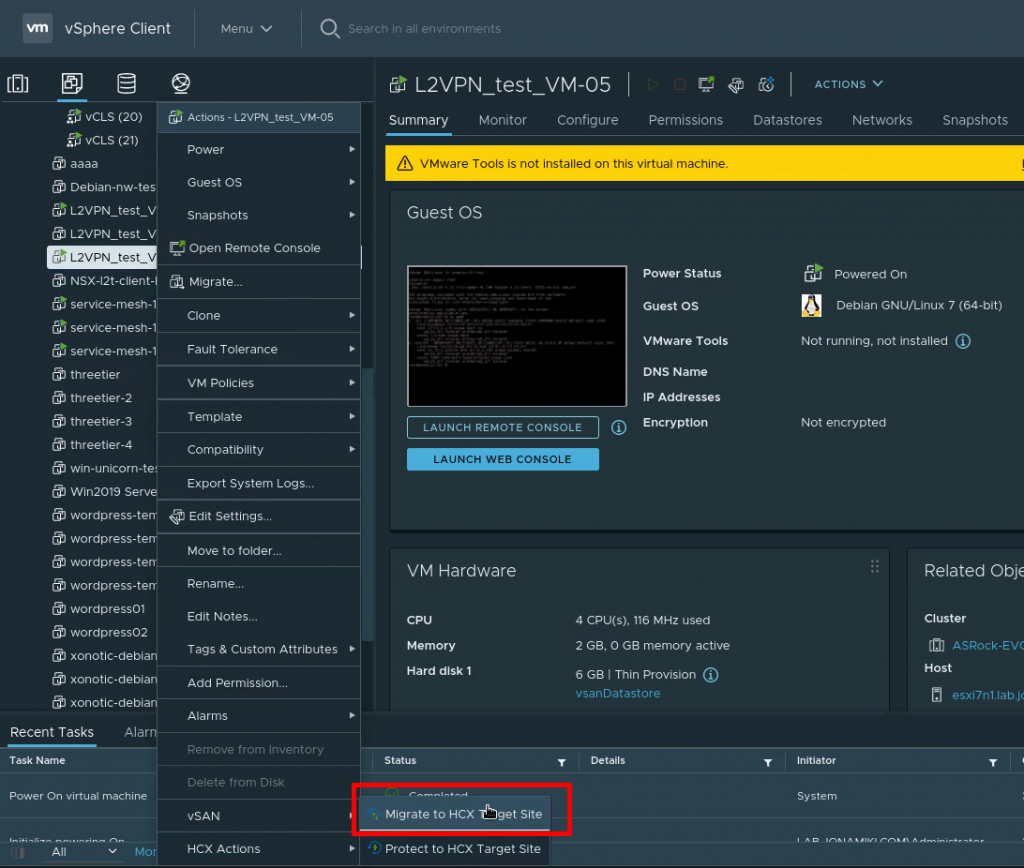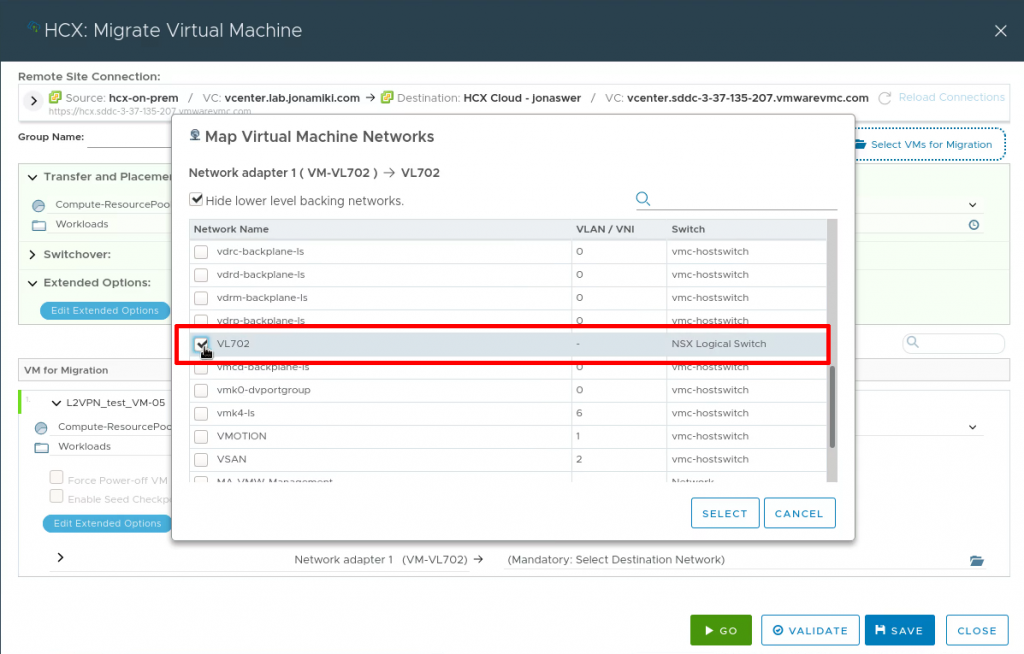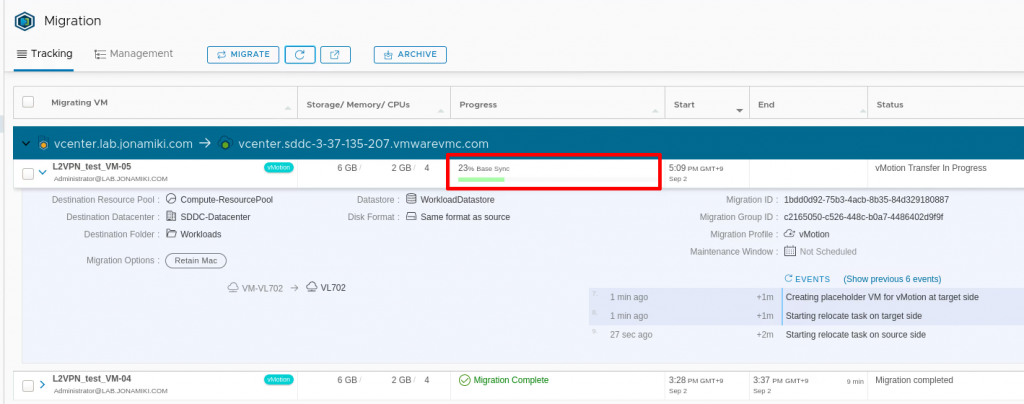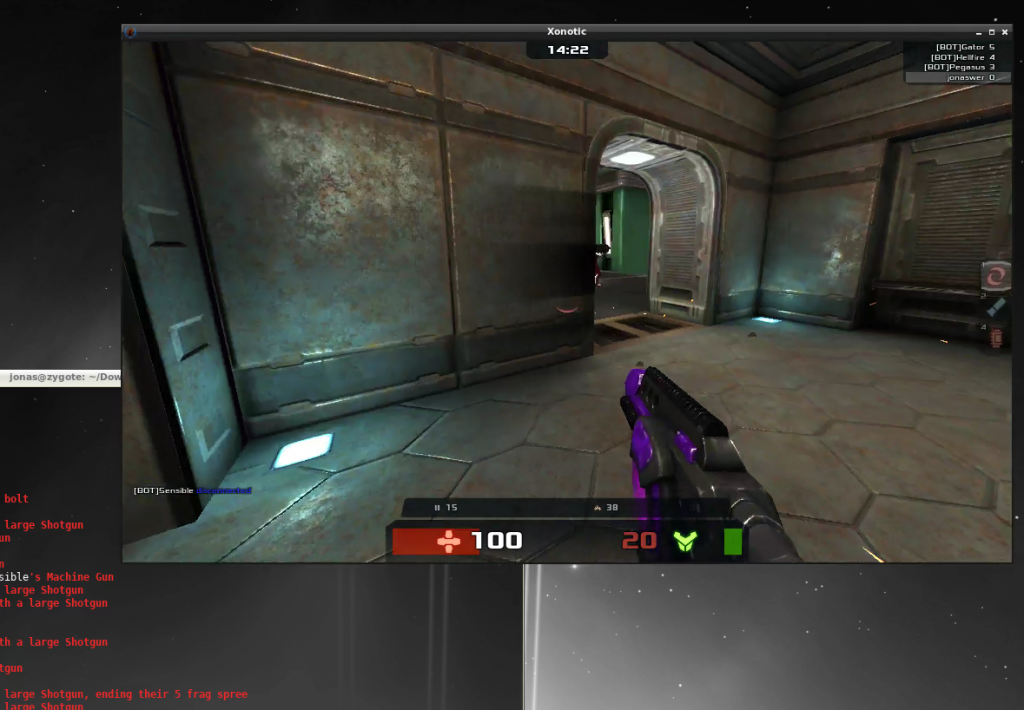Using NSX Autonomous Edge to extend L2 networks from on-prem to VMware Cloud on AWS
This is a quick, practical and unofficial guide showing how to use NSX Autonomous Edge to do L2 extension / stretching of VLANs from on-prem to VMware Cloud on AWS.
Note: The guide covers how to do L2 network extension using NSX Autonomous Edge. It doesn’t cover the deployment or use of HCX or HLM for migrations.
Why do L2 extension?
One use case for L2 extension is for live migration of workloads to the cloud. If the on-prem network is L2 extended / stretched there will be no interruption to service while migrating and no need to change IP or MAC address on the VM being migrated.
Why NSX Autonomous Edge?
VMware offers a very powerful tool – HCX (Hybrid Cloud Extension) to make both L2 extension and migrations of workloads a breeze. It is also provided free of charge when purchasing VMware Cloud on AWS. Why would one use another solution?
- No need to have a vSphere Enterprise Plus license
Because L2 extension with HCX requires Distributed vSwitches and those in turn are only available with the top level vSphere Enterprise Plus license. Many customers only have the Standard vSphere license and therefore can’t use HCX for L2 extension (although they can use it for the migration itself which will be shown later in this post). NSX Autonomous Edge works just fine with standard vSwitches and therefore the standard vSphere license is enough
- Active / standby HA capabilities
Because HCX doesn’t include active / standby redundancy. Sure, you can enable HA and even FT on the cluster, but FT maxes out at 4 VMs / cluster and HA might not be enough if your VMs are completely reliant on HCX for connectivity. NSX Autonomous Edge allows two appliances to be deployed in a HA configuration.
Configuration diagram (what are we creating?)
We have an on-prem environment with multiple VLANs, two of which we want to stretch to VMware Cloud on AWS and then migrate a VM across, verifying that it can be used throughout the migration. In this case we use NSX Autonomous Edge for the L2 extension of the networks while using HCX for the actual migration.
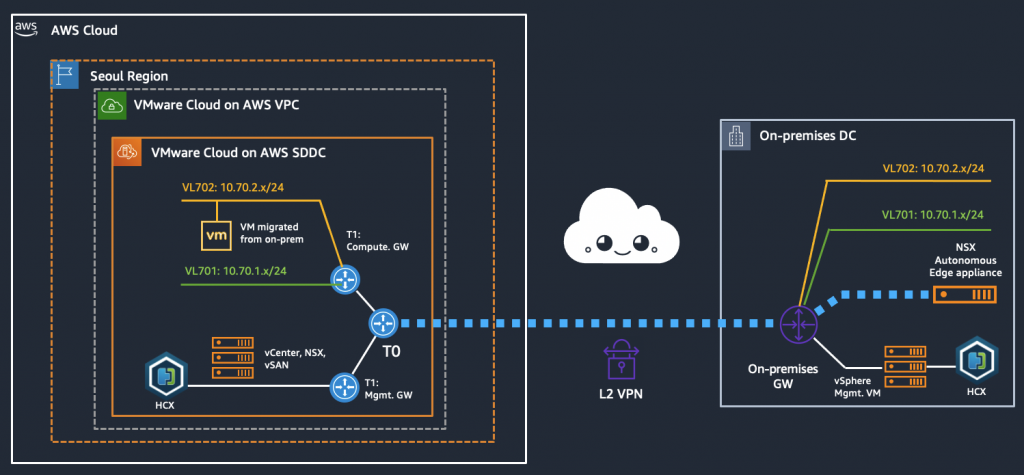 End state, prior to removing on-prem networks
End state, prior to removing on-prem networks
Prerequisites
- A deployed VMware Cloud on AWS SDDC environment
- Open firewall rules on your SDDC to allow traffic from your on-prem DC network (create a management GW firewall rule and add your IP as allowed to access vCenter, HCX, etc.)
- If HCX is used for vMotion: A deployed HCX environment and service mesh (configuration of HCX is out of scope for this guide)
Summary of configuration steps
- Enable L2 VPN on your VMC on AWS SDDC
- Download the NSX Autonomous Edge appliance from VMware
- Download the L2 VPN Peer code from the VMC on AWS console
- Create two new port groups for the NSX Autonomous Edge appliance
- Deploy the NSX Autonomous Edge appliance
- L2 VPN link-up
- Add the extended network segments in the VMC on AWS console
- VM migration using HCX (HCX deployment not shown in this guide)
Video of the setup process
As an alternative / addition to the guide below, feel free to refer to the video below. It covers the same steps but quicker and in a slightly different order. The outcome is the same however.
Enable L2 VPN on your VMC on AWS SDDC
- Navigate to “Networking & Security”, Click “VPN” and go to the “Layer 2” tab
- Click “Add VPN tunnel”
- Set the “Local IP address” to be the VMC on AWS public IP
- Set the “Remote public IP” to be the public IP address of your on-prem network
- Set the “Remote private IP” to be the internal IP you intend to assign the NSX Autonomous Edge appliance when deploying it in a later step
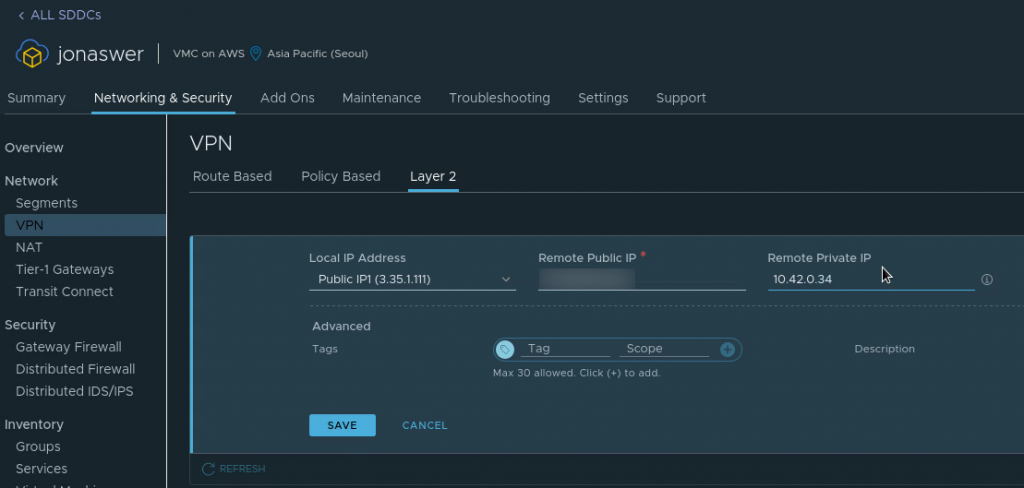 Configuring the L2 VPN server side in VMC on AWS
Configuring the L2 VPN server side in VMC on AWS
Download the NSX Autonomous Edge appliance
After deploying the L2 VPN in VMC on AWS there will be a pop-up with links for downloading the virtual appliance files as well as a link to a deployment guide
- Download link for NSX Autonomous Edge (Choose NSX Edge for VMware ESXi)
- Link to deployment guide (Please use instead if you find my guide to be a bit rubbish)
Download the L2 VPN Peer code from the VMC on AWS console
Download the Peer code for your new L2 VPN from the “Download config” link on the L2 VPN page in the VMware Cloud on AWS console. It will be available after creating the VPN in the previous step and can be saved as a text file
Create two new port groups for the NSX Autonomous Edge appliance
This is for your on-prem vSphere environment. The official VMware deployment guide suggests creating a port group for the “uplink” and another for the “trunk”. The uplink provides internet access through which the L2 VPN is created. The “trunk” port connects to all VLANs you wish to extend.
In this case I used an existing port group with internet access for the uplink and only created a new one for the trunk.
For the “trunk” port group: Since this PG need to talk to all VLANs you wish to extend, please create it under a vSwitch with uplinks which has those VLANs tagged.
A port group would normally only have a single VLAN set. How do we “catch them all”? Simply set “4095” as the VLAN number. Also set the port group to “Accept” the following:
- Promiscuous mode
- MAC Address changes
- Forged transmits
Deploy the NSX Autonomous Edge appliance
The NSX Autonomous Edge can be deployed as an OVF template. In the on-prem vSphere environment, select deploy OVF template
Browse to where you downloaded the NSX Autonomous Edge appliance from the VMware support page. The downloaded appliance files will likely contain several appliance types using the same base disks. I used the “NSX-l2t-client-large” appliance:
For the network settings:
- Use any network with a route to the internet and good throughput as the “Public” network.
- The “Trunk” network should be the port group with VLAN 4095 and the changed security settings we created earlier.
- The “HA Interface” should be whatever network you wish to use for HA. In this case HA wasn’t used as it was a test deployment, so the same network as “Public” was selected.
For the Customize template part, enter the following:
- Passwords: Desired passwords
- Uplink interface: Set the IP you wish the appliance to have on your local network (match with what you set for the “Remote Private IP” in the L2 VPN settings in VMC on AWS at the beginning)
- L2T: Set the public IP address shown in VMC on AWS console for your L2 VPN and use the Peering code downloaded when creating the L2 VPN at the start.
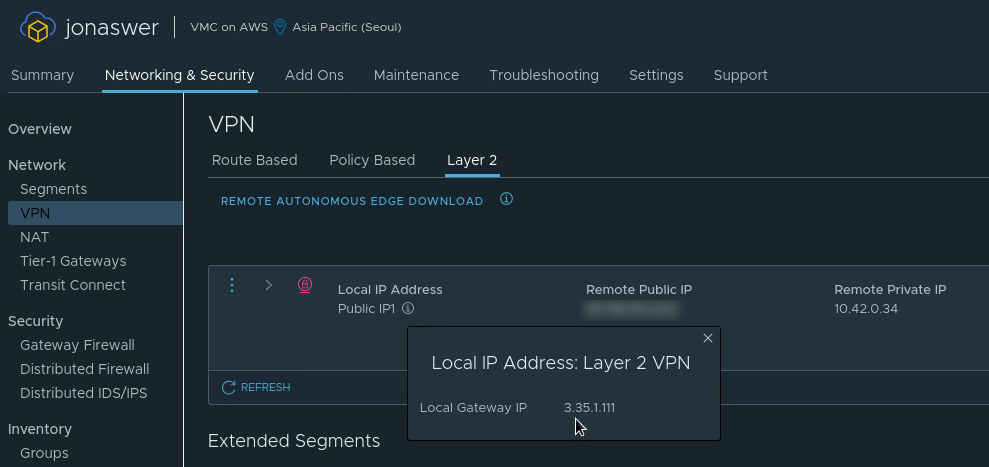 Use the Public IP (“Local IP Address”) as the “Peer address” when deploying the appliance
Use the Public IP (“Local IP Address”) as the “Peer address” when deploying the appliance
 Peering code: Make sure to copy the whole thing. It often ends in equal marks and they have to be copied in too(!)
Peering code: Make sure to copy the whole thing. It often ends in equal marks and they have to be copied in too(!)
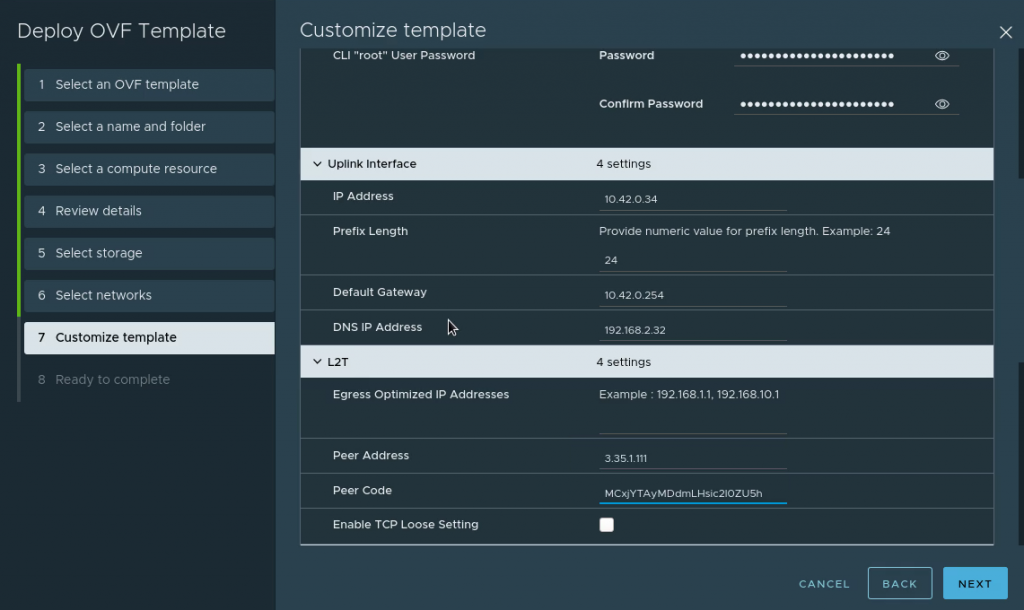 Example of template customization for our test deployment
Example of template customization for our test deployment
Enable TCP Loose Setting: To keep any existing connections alive during migration, check this box. For example, if you have an SSH session to the VM you want to migrate which you wish to keep alive.
The Sub interfaces: This is the most vital part and the easiest place to make mistakes. For the Sub interfaces, add your VLAN number followed by the tunnel ID in brackets. This will assign each VLAN a tunnel ID and we will use it on the other end (the cloud side) to separate out the VLANs.
They should be written as: VLAN(tunnel-ID). Example for VLAN 100 and tunnel ID 22 would look like this: 100(22). For our lab we extend VLANs 701 and 702 and will also assign them tunnel IDs which match the VLAN number. For multiple VLANs, use comma followed by space to separate them. Don’t use ranges. Enter each VLAN with its respective tunnel ID individually.
HA index: Funny detail – HA is optional but if you don’t set the HA index on your initial appliance anyway it won’t boot. Even if you don’t intend to use HA, please set this to “0”. HA section is not marked as “required” by the wizard when deploying, so it is fully possible to deploy a non-functioning appliance.
L2 VPN link-up
The L2 VPN tunnel will connect automatically using the settings provided when deploying the appliance. Open the console of the L2 VPN appliance, log in with “admin /
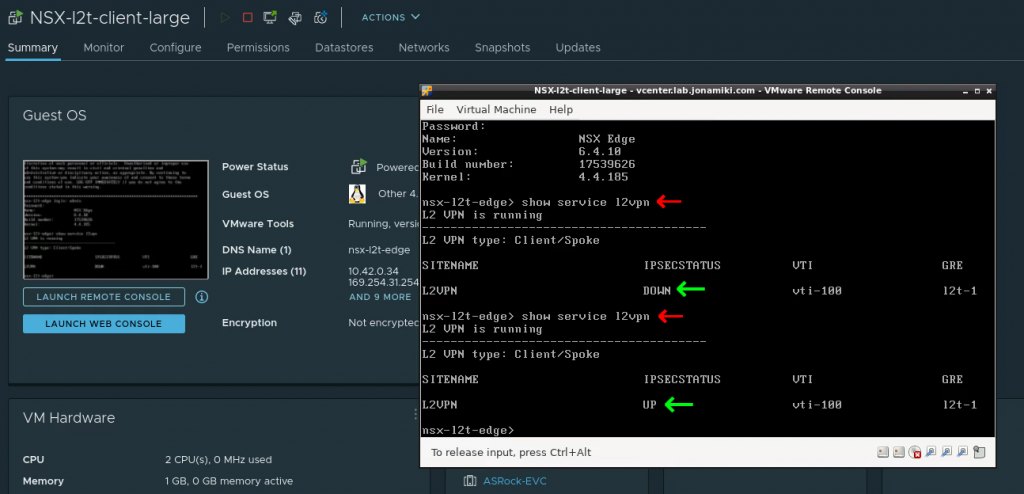 Viewing the L2 VPN tunnel status from the appliance console in vCenter on-prem
Viewing the L2 VPN tunnel status from the appliance console in vCenter on-prem
In the VMC on AWS console the VPN can also be seen to change status from “Down” to “Success”
Add the extended network segments in the VMC on AWS console
Under the L2 VPN settings tab in the VMC on AWS console it is now time to add the VLANs we want to extend from on-prem. In this example we will add the single VLAN 702 which we gave the tunnel ID “702” during the NSX Autonomous Edge deployment
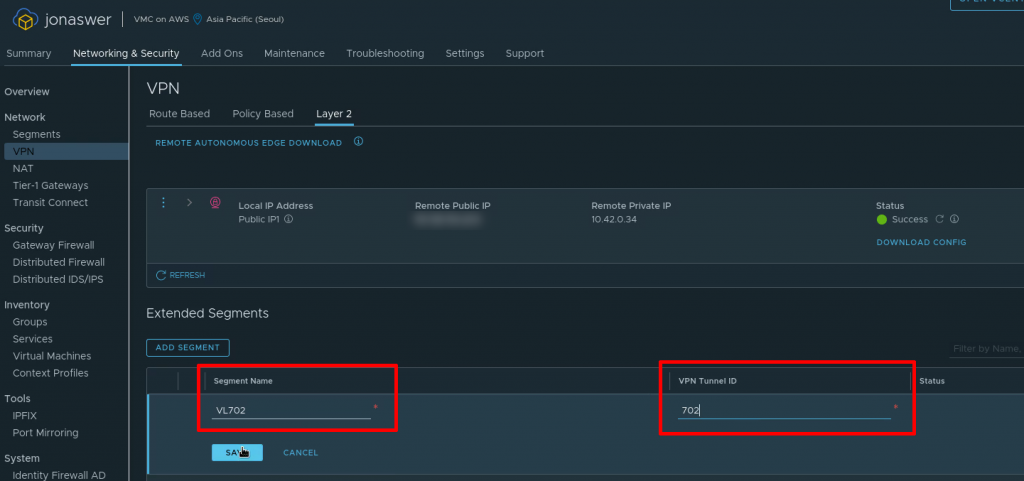 Adding the VLANs we wish to extend from on-prem in the VMC on AWS console
Adding the VLANs we wish to extend from on-prem in the VMC on AWS console
The extended network can now be viewd under “Segments” in the VMC on AWS console and will be listed as type “Extended”
VM migration using HCX
Now the network has been extended and we can test it by migrating a VM from on-prem to VMC on AWS. To verify if it works we’ll be running Xonotic – an open source shooter – on the VM and run a game throughout the migration.
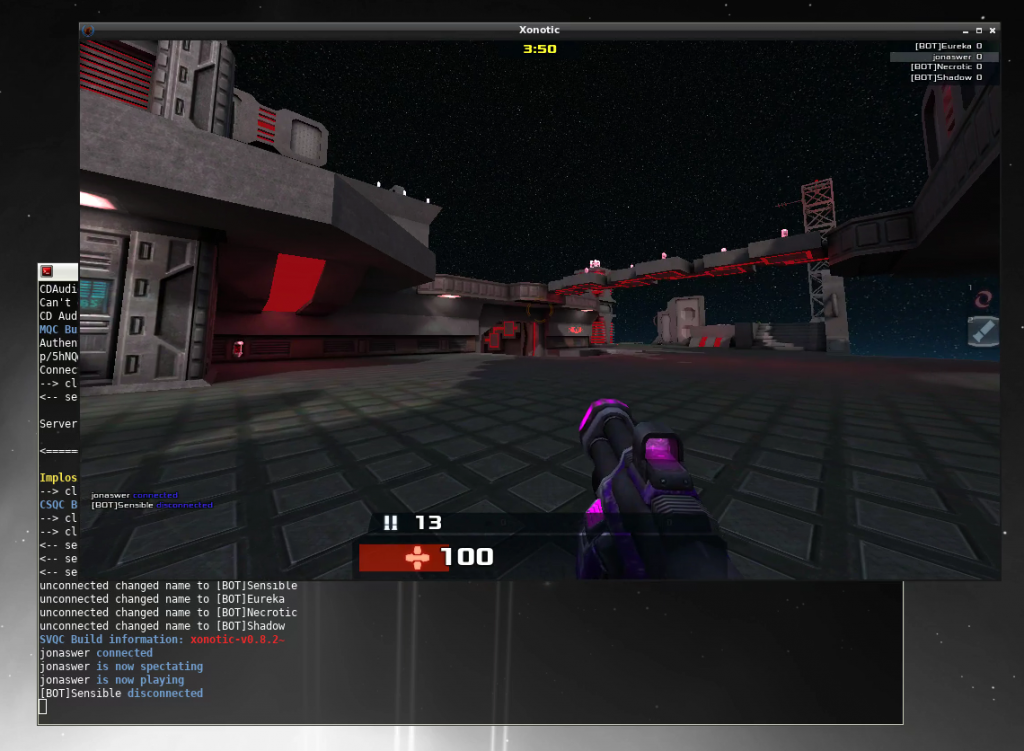 Starting a nice round of Xonotic deathmatch from our local machine to the VM we are about to migrate to the cloud
Starting a nice round of Xonotic deathmatch from our local machine to the VM we are about to migrate to the cloud
Verifying that our HCX link to the VMC on AWS environment is up
Starting the migration by right-clicking the VM in our local on-prem vCenter environment
Selecting our L2 extended network segment as the target network for the virtual machine
Monitoring the migration from the HCX console
If the VM is pinged continuously during migration: Once the migration is complete the ping time will go from sub-millisec to around 35ms (migrating from Tokyo to Seoul in this case)
Throughout migration – and of course after the migration is done – our Xonotic game session is still running, albeit with a new 35ms lag after migration 🙂
Conclusion
That’s it – the network is now extended from on-prem. VMs can be migrated using vMotion via HCX or using HLM (Hybrid Linked Mode) with their existing IPs and uninterrupted service.
Any VMs migrated can be pinged throughout migration and if the “Enable TCP loose Setting” was checked any existing TCP sessions would continue uninterrupted.
Also, any VMs deployed to the extended network on the VMC on AWS side would be able to use DHCP, DNS, etc. served on-prem through the L2 tunnel.
if you followed along this far: Thank you and I hope you now have a fully working L2 extended network to the cloud!

